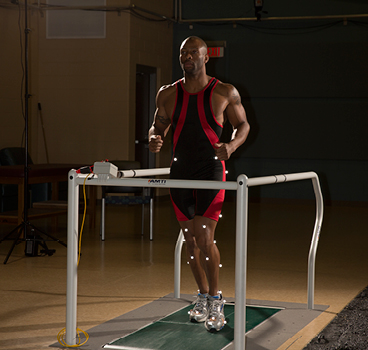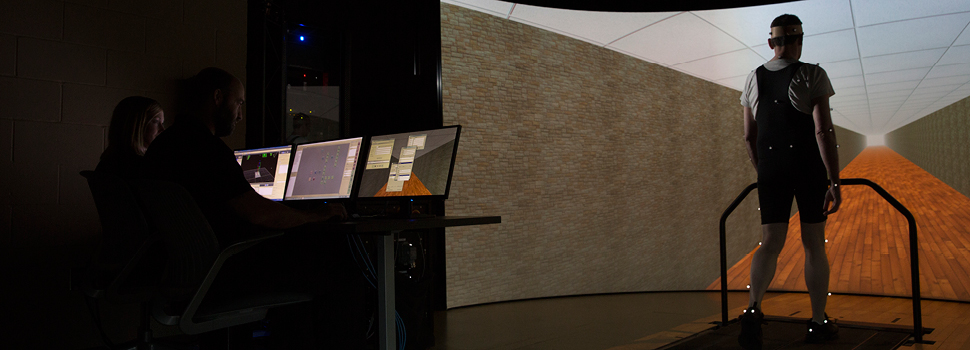Breakthroughs in Helping People Move Again: Dr. Nick Stergiou
How studying human movement can define the way we proceed with treatment.
It’s morning. Your alarm clock blares its wake-up call. You sit up, reach to turn it off, swing your feet over the side and stand up. You walk to the bathroom, taking step after step. You brush your teeth, moving the toothbrush back and forth. Up and down. You bend over to rinse.
All this movement—involving muscles, brain, senses and environment—takes place in the span of minutes and continues to happen as you go about your day. Yet, the majority of us never think about how we move. But for Dr. Nick Stergiou and his visionary team at the University of Nebraska Omaha, it’s all they research—biomechanics, which is the study of human movement and the forces that produce it.
But why?

ADVANCING BIOMECHANICS RESEARCH.
If Dr. Stergiou and his team’s previous groundbreaking work is any indication, their research is vital to those suffering from movement related disorders. Their lab incorporates principles from engineering, physiology and mathematics to understand the complexity of how you integrate muscles, nerves, and the environment to accomplish movement. It’s housed in UNO’s Biomechanics Research Building—the first ever structure dedicated to the study of movement and home to the world’s first ever Center for Research in Human Movement Variability.
When Dr. Stergiou first started his faculty position at UNO, there was no Biomechanics Research Building; no Center for Research in Human Movement Variability. Back then, Dr. Stergiou was part of the UNO School of HPER, which was an academic unit of the UNO College of Education.
Through a lot of hard work and a desire to help people move again, Dr. Stergiou played an important role in growing the department, turning it into what it is today. The first milestone was UNO’s Biomechanics Research Building, a unique $6 million research facility. Then UNO received a $10.1 million grant — the largest grant in the university’s history— for the Center for Research in Human Movement Variability.
“Receiving this award means that the federal government considers UNO a research institution with doctoral level education that can produce excellent biomedical research,” Dr. Stergiou explained. “It allows us to realize the potential of UNO and the Biomechanics Research Building by establishing a global reputation as an outstanding research institute in biomechanics.”
This year, Dr. Stergiou and his team successfully hosted the inaugural Human Movement Variability Conference at the Center for Research in Human Movement Variability. Some of the field’s most respected researchers, including keynote speaker Dr. Andreas Daffershofer from VU University in Amsterdam, arrived in Omaha, excited to share ideas, explore possibilities and review unprecedented research.
“I want Omaha to be the center,” said Dr. Stergiou. “I want Omaha and Biomechanics to be synonymous.”
At this point, Omaha is on its way.
TREATING MOVEMENT RELATED DISORDERS.
Human movement variability has been something of an ignored area of study, often seen as an error in the motor system. Fortunately for those with movement disorders, this is no longer the case. The biomechanics team has conducted research that has led to interventions for infants with cerebral palsy and to new treatment strategies for diseases like autism, multiple sclerosis and peripheral arterial disease. It’s helped those with problems moving due to an amputation, aging or stroke. It’s even helped astronauts regain natural walking patterns that are commonly disrupted after long trips in space.
What the team has accomplished has greatly influenced techniques in robotic surgery and rehabilitation. And, it’s given hope to millions who suffer while moving.


